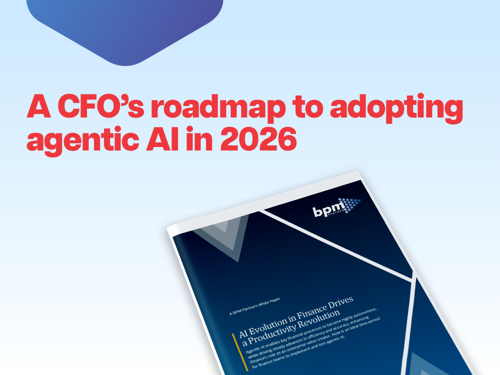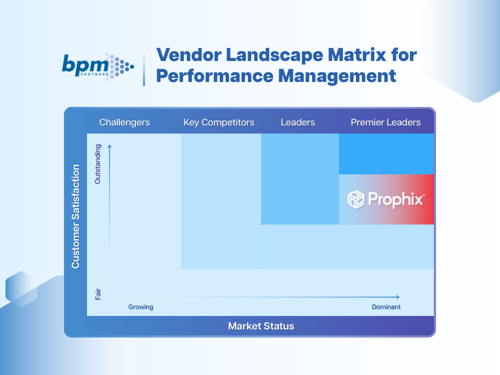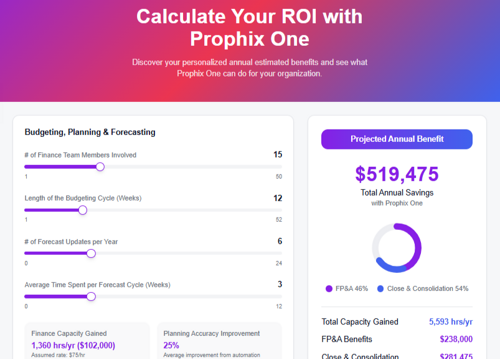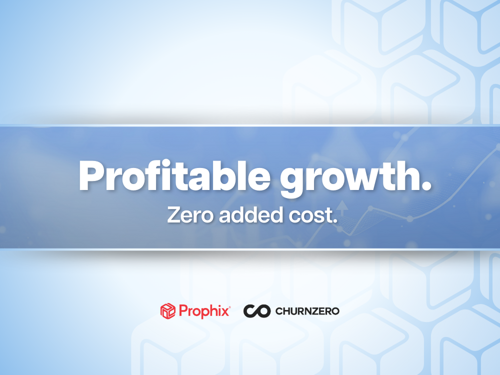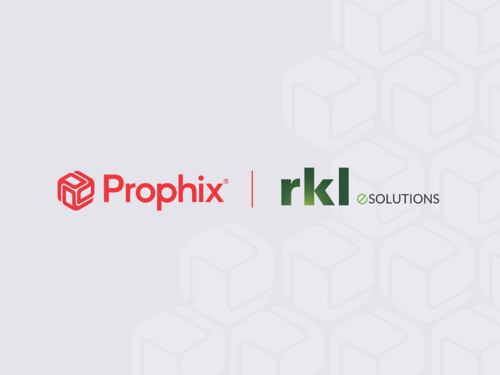Download the BPM Partners Whitepaper
9 financial forecasting models to predict business performance
Only 33% of organizations have a formal forecasting process.
October 10, 2024Do you know how many organizations have a formalized approach to forecasting? Knowing what your organization’s revenue, expenses, and overall performance will look like in the future is essential to building an effective strategy. So, most organizations should have this figured out, right?
33%. That’s the percentage of organizations that have a formal forecasting process.
Let’s change that. Here’s your guide to financial forecasting models:
What is financial forecasting?
Financial forecasting is reviewing data, variables, and expert opinions to estimate an organization’s future performance. The outcome of this process is called a forecast.
Organizations use forecasting to try and predict how much revenue they can expect to generate in the future, estimate the resources they’ll need, and create strategies to achieve important goals.
Forecasts affect multiple processes, from creating budgets to making hiring plans. It’s also a crucial part of financial reporting, financial planning, and analysis.
But despite the importance of this process, standardization is rare, leading to inaccurate forecasts. Only 7% of sales leaders can forecast revenue within 5% of their actual numbers, and this struggle isn’t exclusive to the sales team.
That’s why using the right method is essential.
Quantitative and qualitative financial forecasting models
Like with most other finance processes, there are multiple ways organizations can produce accurate forecasts. These methods are either quantitative or qualitative, the difference being:
- Quantitative forecasting models focus on numbers. All the information you collect and the forecasts you produce will rely on figures like income and expenses.
- Qualitative forecasting relies on factors that can’t be quantified. You’ll source perspectives, context, and input from experts throughout your organization to make estimates about future performance.
Most organizations will use a combination of quantitative and qualitative data when building forecasts. Here are some of the most popular methods.
Moving average forecasting
This is one of the simplest methods for financial forecasting. Take averages of a specific data point over multiple periods, and find the average using this formula:
Average of first period + Average of second period + Average of third period / Total number of periods
Say, for example, you needed a moving average of expenses over the past five fiscal years, using averages for each month of that year to get your total. Using some example numbers, your calculation might look like this:
Fiscal Year |
Average Expenses |
Year 1 |
$1,500,000 |
Year 2 |
$2,250,000 |
Year 3 |
$2,750,000 |
Year 4 |
$2,500,000 |
Year 5 |
$3,000,000 |
1,500,000 + 2,250,000 + 2,750,000 + 2,500,000 + 3,000,000 = $12,000,000
$12,000,000 / 5 = $2,400,000
That would make your moving average for yearly expenses $2,400,000. You could then use this number to forecast your expenses for upcoming fiscal years.
Simple linear regression
A simple linear regression is a type of calculation used to determine how one variable (i.e. the independent variable) affects another (i.e. the dependent variable). For instance, you might use a linear regression to calculate how overtime hours impact your organization’s revenue.
You’d pull up data about both variables throughout the historical period you want to use for your forecast (e.g. the past fiscal year) and add it as points on a graph, with the independent variable (overtime hours) on the X axis and the dependent variable (revenue) on the Y. Then, you’d use this equation to plot out the relationship between them:
Y = BX + A
- Y: Independent variable (e.g., overtime hours)
- X: Dependent variable (e.g., revenue)
- B: Slope of the line
- A: Is the Y-intercept
The result will help you understand the relationship between these variables, which you can use in your overall forecasts. Don’t worry, most FP&A software will allow you to run this calculation automatically.
Multiple linear regression
A multiple linear regression works essentially the same way as a simple linear regression, except it accounts for the relationship between multiple independent variables and your dependent variable. It uses the same equation as a simple linear regression, mapping the relationship between one independent variable and your dependent variable at a time.
For example, you might want to determine how overtime hours, sick days, and total hours worked each impact your organization’s revenue. You can then represent the result on a scatter plot with multiple lines or using a 3D model.
There’s one thing you need to watch out for with multiple linear regression: overlap between independent variables. If your independent variables affect each other, it’s possible to overstate their influence on your dependent variable. You can mitigate this by running simple linear regressions between independent variables—you just need to make one of them the dependent variable for that analysis.
Be prepared for what-if with financial forecasting from Prophix One™
Time series analysis
A time series is a sequence of data points recorded over a specific period in order. With time series analysis, you look over this historical data to identify trends you can use as a basis for your forecasts.
You could, for example, look over your organization’s historical sales volume to try and spot seasonal trends. If you spotted a dip in sales throughout the summer, you could then use that information in future forecasts, giving leaders a more accurate understanding of sales volume throughout the year.
Rolling forecast
Most forecasting methods look at historical data to make assumptions about the future. These assumptions lead to static forecasts that often become outdated as soon as they’re produced. With a rolling forecast, you instead pull from recent data to create forecasts that are updated continuously.
If you experience a month where sales are down dramatically, for example, a typical forecast will quickly show a gap between your estimates and reality. A rolling forecast, meanwhile, will take this data into account and adjust future projections with this downturn in mind.
These can be tricky to implement since they require continuous access to reliable data, but having the right tools, like FP&A software, can mitigate this.
Delphi method
Instead of looking back over financial statements to make your forecasts, the Delphi method involves reaching out to experts and relying on their analysis of broader market conditions. You can do this using questionnaires, running focus group sessions, or asking them to prepare their own forecasts.
Proper use of this method depends on comparing forecasts from multiple experts and their context to build a final forecast that best represents your organization’s potential future.
Driver-based forecasting
Forecasting can involve an overwhelming amount of data. So many variables influence your organization’s success that trying to include them all is impossible. Think of driver-based forecasting as a filter, allowing you to focus exclusively on the most important variables.
With this method, you’ll identify “drivers,” or factors that have the most influence on your organization’s performance. These can be external factors like interest rates or internal factors like the number of employees you have.
Once you identify these drivers, you can examine their impact on the broader organization and use that to draft more accurate forecasts.
Predictive and prescriptive forecasting
This approach combines a quantitative perspective (e.g., analyzing historical data) and qualitative elements (e.g., subjective insights and expert opinions) to create a more holistic forecast. While some forecasts can overwhelm you with the amount of data they track, others exclude key contextual factors. The latter is what this method prevents.
Each element can be weighted, based on your estimate of their impact on your organization’s performance.
Exception-based forecasting
Some fiscal years stand out from the rest. Waves of layoffs, macroeconomic conditions, and world events can all seriously affect your organization’s performance, creating outliers that can impact your forecasts if you were to include them in averages, linear regressions, and similar analyses.
Exception-based forecasting identifies these outliers across multiple variables so you can evaluate them and understand what’s behind them.
How Prophix can help with your financial forecasting models
No matter which financial forecasting model you use, you’ll run into the same issue: sourcing and processing accurate data. Even models like the Delphi method depend on having accurate data, and most organizations struggle with this.
Forecasting models like rolling forecasts allow organizations to work with accurate estimates throughout the year instead of relying on outdated data. These are only possible with robust data collection, automation, and processing tools.
That’s where a Financial Performance Platform like Prophix One comes in.
Wilson Construction relies on Prophix One to create forecasts based on live data from their project management suite and compare it to their budget to stay on track until it’s complete.
Want to see what Prophix One can do for your organization?
